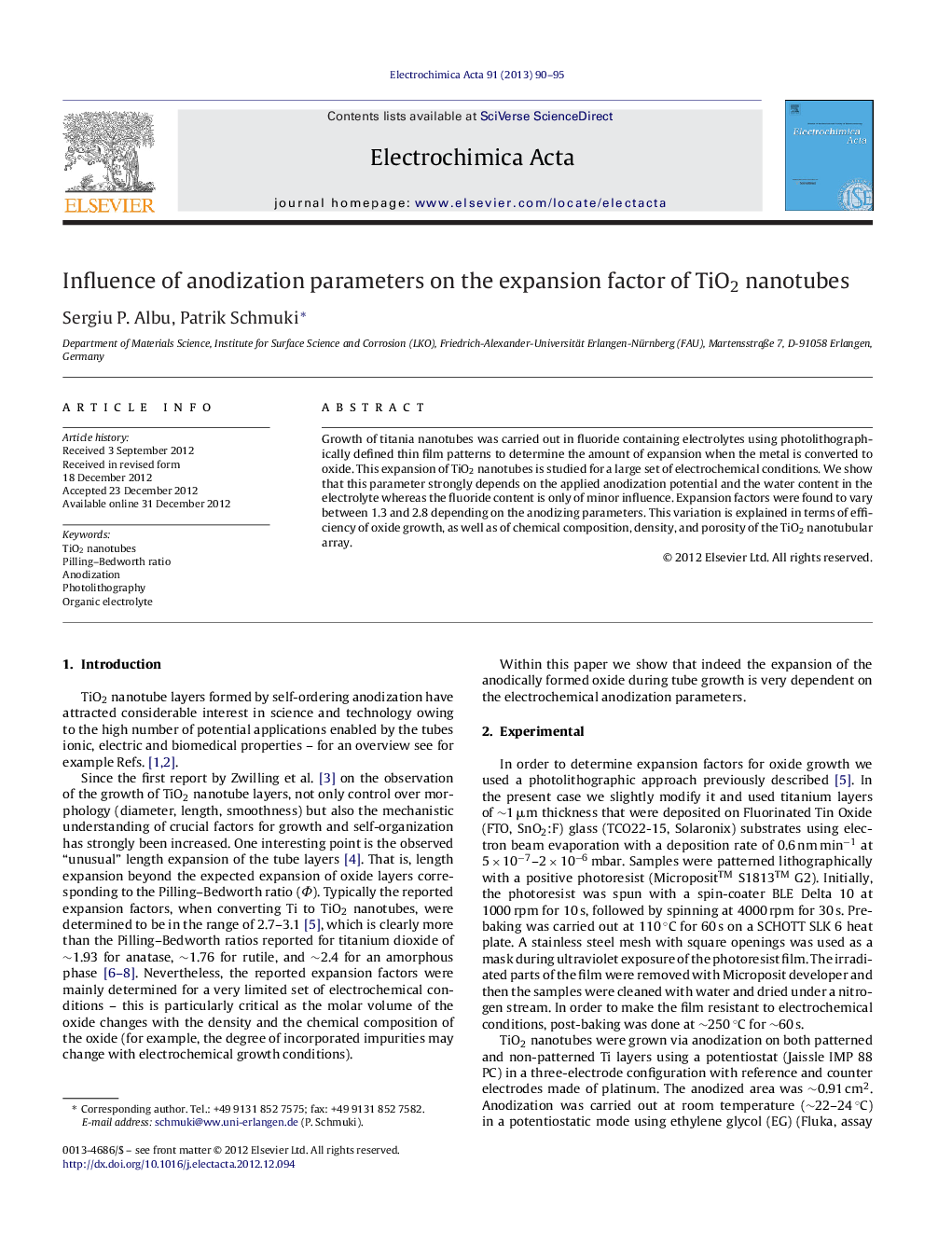| Article ID | Journal | Published Year | Pages | File Type |
|---|---|---|---|---|
| 186978 | Electrochimica Acta | 2013 | 6 Pages |
Growth of titania nanotubes was carried out in fluoride containing electrolytes using photolithographically defined thin film patterns to determine the amount of expansion when the metal is converted to oxide. This expansion of TiO2 nanotubes is studied for a large set of electrochemical conditions. We show that this parameter strongly depends on the applied anodization potential and the water content in the electrolyte whereas the fluoride content is only of minor influence. Expansion factors were found to vary between 1.3 and 2.8 depending on the anodizing parameters. This variation is explained in terms of efficiency of oxide growth, as well as of chemical composition, density, and porosity of the TiO2 nanotubular array.
Graphical abstractFigure optionsDownload full-size imageDownload as PowerPoint slideHighlights► TiO2 nanotubes are grown anodically in fluoride containing ethylene glycol. ► We find that the oxide expansion factor varies with the electrochemical conditions. ► Applied potential and water content are the key in affecting the expansion factor.
